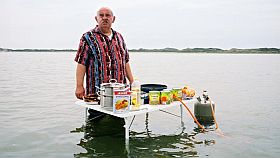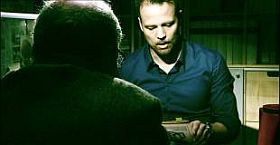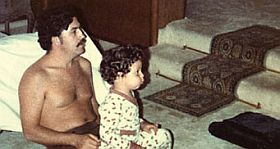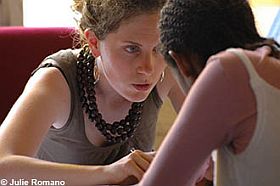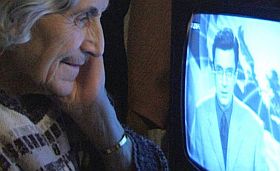Den fælde vores gamle helte, de røde lejesvende falder i, er ikke opstillet af Rosenkrands, men er mere noget i deres person, der i situationen aktiveres, skriver her til morgen en jeg kender i en sms. Vi så jo del 2 i aftes. Og ja, sådan er det nok, tænker jeg. Det er jo det dokumentarfilmen kan. Fordi den interesserer sig for mere i scenen end den medvirkendes udsagn i sætninger. Tv-journalisten plejer ellers at klippe, når sætningen er færdig uanset, hvad der sker i billedet. Filminstruktøren i sin tradition stoler derimod på sit billede og lader det stå til lige før, det mister intensitet og dør af sig selv. Rosenkrands går filmisk til det og de stærkeste momenter i aftes var to sådanne steder.
Bjørn Erichsen har engang i gamle, gamle dage undervist i historie på en højskole i Østtyskland. Danske unge politisk engagerede var elever på sommerkursus i en skole, deres organisation, DKU vistnok, havde lånt. Det var og er formodentlig helt lovligt. Men havde nogen i DDR (en statslig eller poiitisk organisation) betalt Erichsens rejse, ophold og lommepenge? Rosenkrands’ spørgsmål falder nysgerrigt, præcist og venligt. Og Erichsen forbløffes over den lille detalje: “..lommepenge, lommepenge.. jeg kan ærlig talt ikke huske det.” Og det er også lige meget. Det kan han jo ikke dømmes på. Men det dermed længe fastholdte billede skildrer ham som et menneske i denne lille tvivl. Smukt, smukt. Og lader mig ane, at sådan er dette menneske også i større tvivlsspørgsmål. Forvirret først, så undrende, prøvende i et forsøg på at være ærlig.
Tvivlen er mere klædelig end skråsikkerheden. Smilet, latteren, overbærenheden med sig selv dengang mere sund end den rigide fastholden. Ja, personligheden folder sig ud for mig under den lange filmscene, jeg ser den som levende eller som forkrampet. Og det er den eksistentelle erfaring, som hurtigt sætter det med lommepengene i skygge. Det er scenen jeg husker her, ikke oplysningen. Det er billedet som afslører: sådan ser en rød lejesvend ud, når han falder i sin personligheds fælde: ret menneskelig ser han ud. Det er godt nok et spændende teater, Rosenkrands her har iscenesat. Og så var der jo en scene mere i aftes! Den sidste. Kjeld Koplev var i stolen..
Jakob Rosenkrands: Jagten på de røde lejesvende, DR2, 2010.



